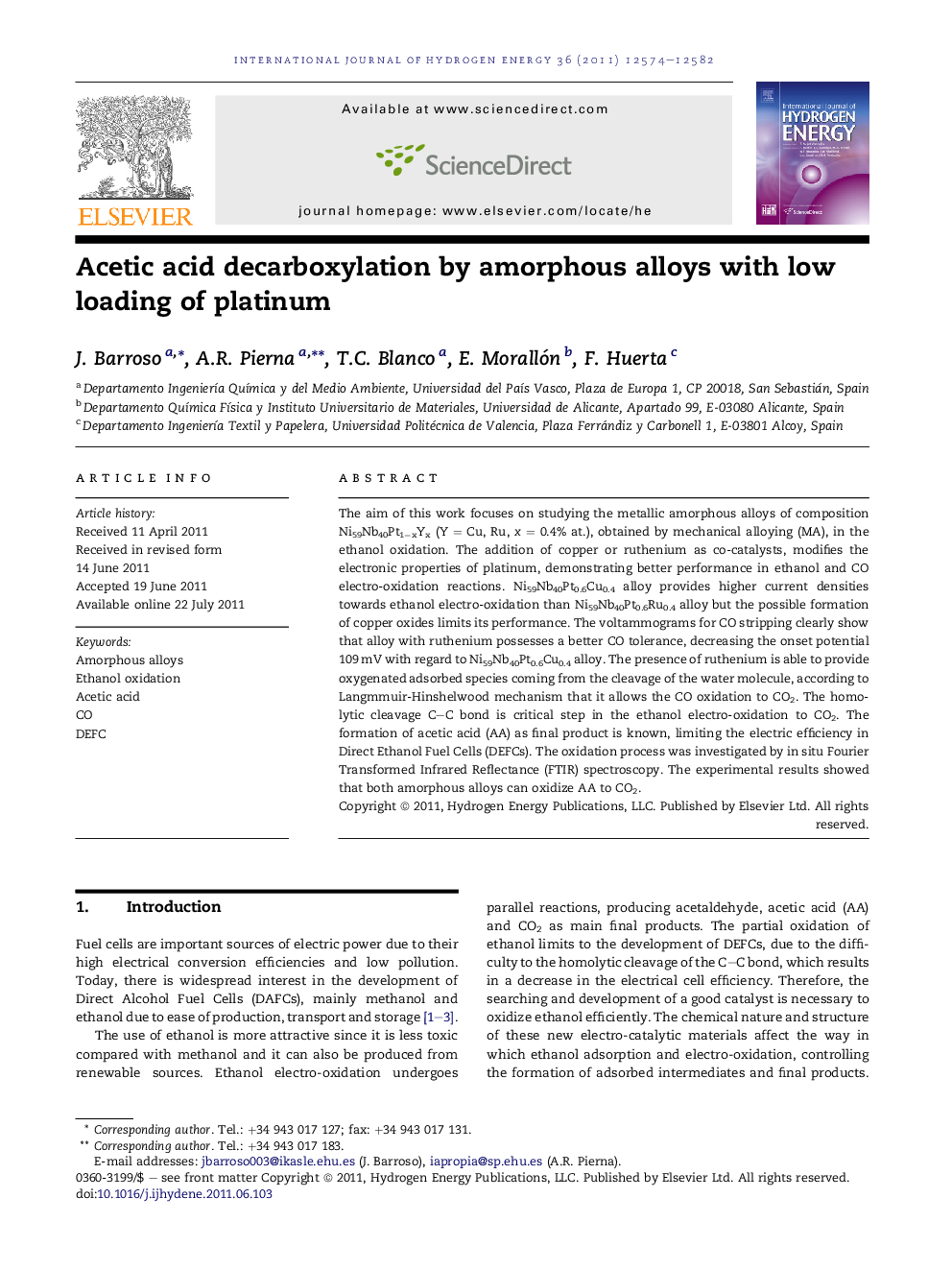| کد مقاله | کد نشریه | سال انتشار | مقاله انگلیسی | نسخه تمام متن |
|---|---|---|---|---|
| 1282460 | 1497574 | 2011 | 9 صفحه PDF | دانلود رایگان |

The aim of this work focuses on studying the metallic amorphous alloys of composition Ni59Nb40Pt1−xYx (Y = Cu, Ru, x = 0.4% at.), obtained by mechanical alloying (MA), in the ethanol oxidation. The addition of copper or ruthenium as co-catalysts, modifies the electronic properties of platinum, demonstrating better performance in ethanol and CO electro-oxidation reactions. Ni59Nb40Pt0.6Cu0.4 alloy provides higher current densities towards ethanol electro-oxidation than Ni59Nb40Pt0.6Ru0.4 alloy but the possible formation of copper oxides limits its performance. The voltammograms for CO stripping clearly show that alloy with ruthenium possesses a better CO tolerance, decreasing the onset potential 109 mV with regard to Ni59Nb40Pt0.6Cu0.4 alloy. The presence of ruthenium is able to provide oxygenated adsorbed species coming from the cleavage of the water molecule, according to Langmmuir-Hinshelwood mechanism that it allows the CO oxidation to CO2. The homolytic cleavage C–C bond is critical step in the ethanol electro-oxidation to CO2. The formation of acetic acid (AA) as final product is known, limiting the electric efficiency in Direct Ethanol Fuel Cells (DEFCs). The oxidation process was investigated by in situ Fourier Transformed Infrared Reflectance (FTIR) spectroscopy. The experimental results showed that both amorphous alloys can oxidize AA to CO2.
► Amorphous Ni59Nb40Pt0.6Cu0.4 and Ni59Nb40Pt0.6Ru0.4 alloys as anodes in DEFCs.
► Catalysts were obtained by mechanical alloying (MA).
► The homolytic cleavage C–C bond is critical step in the ethanol electro-oxidation to CO2.
► The FTIR studies showed that both amorphous alloys can oxidize acetic acid to CO2.
Journal: International Journal of Hydrogen Energy - Volume 36, Issue 19, September 2011, Pages 12574–12582